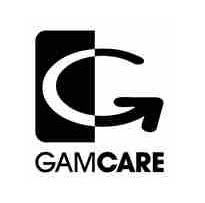Pot Limit Omaha SNG Tournaments provide their own challenges – the ‘mechanical strategy’ used by no-limit Holdem SNG experts is difficult to apply where pot-limit betting and close pre-flop hand values affect play. This guide looks at the various stages of a PLO SNG Tournament and provides key strategy factors to consider at each stage.
The Early Stages
Staying tight and waiting for premium hands in the early stages will keep you out of trouble – but, compared to Holdem SNGs, this also carries many risks. The problem with ‘waiting for aces’ is that your raise will tip off any observant opponents to your holding. Allowing them to call with a wide range of hands and put you under pressure on many flops . To balance this you will need to raise with a range of quality hands, include double suited high-card / pair combinations and medium rundown hands such as 7-8-9-10 (preferably double suited). The fact that no hand is a huge favorite before the flop, combined with the pot limit betting, means that ‘waiting for monsters’ will actually involve seeing the flop first – do not be scared to see a few cheap pots in position – particularly against loose / passive opponents.
The Middle Stages
As the blinds increase and the number of players goes down tight and aggressive play will be rewarded. Avoid calling raises when a continuation bet by an opponent would commit you to the pot. If this is the case then your choice should be between re-raising before the flop or folding. The real key to the middle stages is to manage the betting in such a way as to ensure you make the final bet on each hand – in this way you retain the ability to get your opponent to fold… giving you an extra way to win compared to simply showing down.
The exact method of getting the last bet into the pot will depend on the size of your stack (and that of your opponent) and your position at the table. For example, if you call a raise from the blinds and have 15 BBs left in a 4BB pot then checking to your opponent and allowing them a pot sized continuation bet will allow you to re-raise enough to have fold equity. If you are in position this will depend on the tendencies of your opponent, a re-raise pre-flop would be ideal if your opponent will usually check to you – now you can assert the maximum pressure by getting the rest of your stack in on the flop.
The Bubble
Mechanical ‘ICM’ based bubble play is less effective in a PLO SNG – since you will not usually be able to get all-in before the flop without giving an opponent the correct odds to call your re-raise. Stack-sizes are critical here, especially where there is a small stack present at the table. Where the smallest stack is out of the hand you can raise with a wider range of hands to take the blinds. If you have a medium stack then once again the key concept of the ‘last bet with fold equity’ should be noted. The chances of any opponent waking up with a monster hand while 4-handed are small, aggressive play will ensure that it is your opponents (and not you!) that are forced to make the difficult decisions. Remember, individual opponents tendencies are important, if a tight player re-pots enough to commit themselves while a shorty is present they will usually have a monster!
In The Money And Heads-Up
The button is your best asset at any stage of a PLO SNG, when in the money and heads-up the importance of this is magnified. Once again the chances of any opponent having a monster hand are small and so a wide range of hands become raising candidates when in position. Keep up the pressure when down to 3 or 2 players – you want to be the one deciding whether the pot is a big one or a small one, not your opponents.




